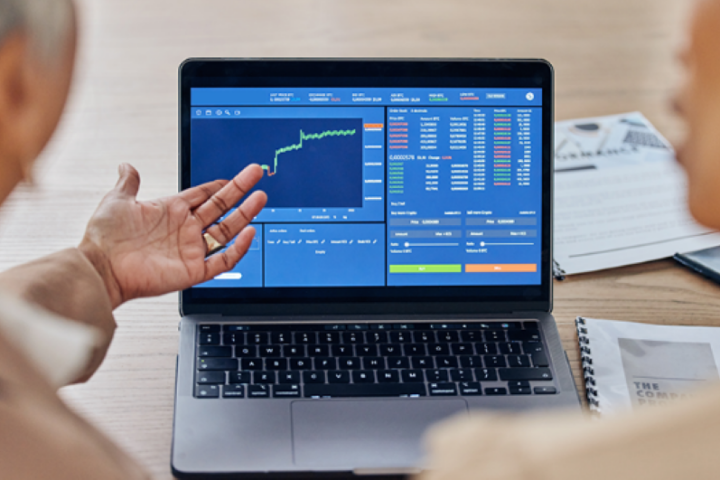An emergency dose of government stimulus helped the economy grow at a 1.9% annual rate in the second quarter, a soft pace but enough to take it off a path perilously close to recession.
Revised data from the Commerce Department released with the second-quarter figures on Thursday showed national output shrank in the final quarter of 2007 before barely edging up at the start of this year.
"With the boost from tax rebates now fading, lower interest rates having little positive impact and signs emerging that overseas demand is weakening, we expect the economy to contract outright in the second half of this year," said Paul Ashworth, senior U.S. economist for Capital Economics of London.
As the countdown to the November 4 presidential elections continues, Bush administration officials insisted the economy could keep growing and dismissed calls from prominent Democrats on Capitol Hill for a second economic stimulus program, saying it was not warranted by recent economic reports.
"I think the politicians are much more concerned about the polls than the economic data," White House budget chief Jim Nussle said during a CNBC television interview. President George W. Bush told a coal producers meeting he considered the economy on a sound footing.
"Exports are on the rise. Durable goods orders are strong. That suggests that businesses are anticipating a better second half of the year," Bush said.
The second-quarter advance in gross domestic product followed a slim revised growth rate of 0.9% rate in the first quarter, previously reported as 1%.
That followed a 0.2% contraction in GDP during the final quarter of last year and skirted the popular definition of recession, which is back-to-back quarters of declining output, but it provided no comfort to financial markets.
Stocks fell and Treasury debt prices gained as investors sought safer haven. The dollar held steady against other major currencies.
Adding to a sense of foreboding about the economy, new claims for jobless benefits unexpectedly jumped 44,000 last week. Though Labor Department officials said special factors were at play, the jump in claims just before Friday's unemployment report for July reinforced worry about a deeper downturn if consumers retrench on spending for fear of losing their jobs.
Payrolls have declined for six straight months, and analysts expect a drop of 75,000 to be reported for non-farm payrolls in July.
Economists surveyed by Reuters had expected GDP to advance by a slightly more robust 2% in the second quarter.
The Commerce Department said businesses reduced inventories at the sharpest rate since the end of 2001, a possible sign they anticipate restrained growth ahead.
A key reading on core inflation — personal consumption expenditures excluding food and energy — rose at a 2.1% annual rate in the second quarter after gaining 2.3% in the first quarter. The moderation in core prices came despite a jump in overall prices of 4.2% from 3.6% in the first quarter.
Consumer spending, which fuels two-thirds of U.S. economic activity, grew at a 1.5% annual rate in the second quarter, up from 0.9% in the first quarter and 1% in the fourth quarter last year. The department noted that personal incomes had risen more sharply in the second quarter and attributed it primarily to the stimulus payments the government was issuing to qualifying consumers.
The economy continues to be hobbled by a severe downturn in the housing sector but the drag from it was less severe in the second quarter. Spending on home building contracted at a 15.6% annual rate in the second quarter, down from rates of 25.1% in the first quarter and 27% in last year's fourth quarter.
The department also issued benchmark revisions for the three-year period 2005-2007, which showed growth was weaker in each year than previously thought. GDP grew 2% in 2007 instead of 2.2%, 2.8% instead of 2.9% in 2006 and 2.9% rather than 3.1% in 2005.
The fourth quarter of 2007 was the weakest three months since the third quarter of 2001 amid the last official recession when GDP shrank at a 1.4% rate.
Businesses kept reducing inventories in the second quarter, possibly a sign that they are bracing for a prolonged period of lackluster growth. Stocks of unsold goods declined at a $62.2 bln rate — the sharpest since an $86.7-bln rate in the fourth quarter of 2001 — after decreases of $10.2 bln in the first quarter and $8.1 bln in the fourth quarter.
What Are Cookies
As is common practice with almost all professional websites, our site uses cookies, which are tiny files that are downloaded to your device, to improve your experience.
This document describes what information they gather, how we use it and why we sometimes need to store these cookies. We will also share how you can prevent these cookies from being stored however this may downgrade or ‘break’ certain elements of the sites functionality.
How We Use Cookies
We use cookies for a variety of reasons detailed below. Unfortunately, in most cases there are no industry standard options for disabling cookies without completely disabling the functionality and features they add to the site. It is recommended that you leave on all cookies if you are not sure whether you need them or not, in case they are used to provide a service that you use.
The types of cookies used on this website can be classified into one of three categories:
- Strictly Necessary Cookies. These are essential in order to enable you to use certain features of the website, such as submitting forms on the website.
- Functionality Cookies.These are used to allow the website to remember choices you make (such as your language) and provide enhanced features to improve your web experience.
- Analytical / Navigation Cookies. These cookies enable the site to function correctly and are used to gather information about how visitors use the site. This information is used to compile reports and help us to improve the site. Cookies gather information in anonymous form, including the number of visitors to the site, where visitors came from and the pages they viewed.
Disabling Cookies
You can prevent the setting of cookies by adjusting the settings on your browser (see your browser’s “Help” option on how to do this). Be aware that disabling cookies may affect the functionality of this and many other websites that you visit. Therefore, it is recommended that you do not disable cookies.
Third Party Cookies
In some special cases we also use cookies provided by trusted third parties. Our site uses [Google Analytics] which is one of the most widespread and trusted analytics solutions on the web for helping us to understand how you use the site and ways that we can improve your experience. These cookies may track things such as how long you spend on the site and the pages that you visit so that we can continue to produce engaging content. For more information on Google Analytics cookies, see the official Google Analytics page.
Google Analytics
Google Analytics is Google’s analytics tool that helps our website to understand how visitors engage with their properties. It may use a set of cookies to collect information and report website usage statistics without personally identifying individual visitors to Google. The main cookie used by Google Analytics is the ‘__ga’ cookie.
In addition to reporting website usage statistics, Google Analytics can also be used, together with some of the advertising cookies, to help show more relevant ads on Google properties (like Google Search) and across the web and to measure interactions with the ads Google shows.
Learn more about Analytics cookies and privacy information.
Use of IP Addresses. An IP address is a numeric code that identifies your device on the Internet. We might use your IP address and browser type to help analyze usage patterns and diagnose problems on this website and to improve the service we offer to you. But without additional information your IP address does not identify you as an individual.
Your Choice. When you accessed this website, our cookies were sent to your web browser and stored on your device. By using our website, you agree to the use of cookies and similar technologies.
More Information
Hopefully the above information has clarified things for you. As it was previously mentioned, if you are not sure whether you want to allow the cookies or not, it is usually safer to leave cookies enabled in case it interacts with one of the features you use on our site. However, if you are still looking for more information, then feel free to contact us via email at [email protected]







